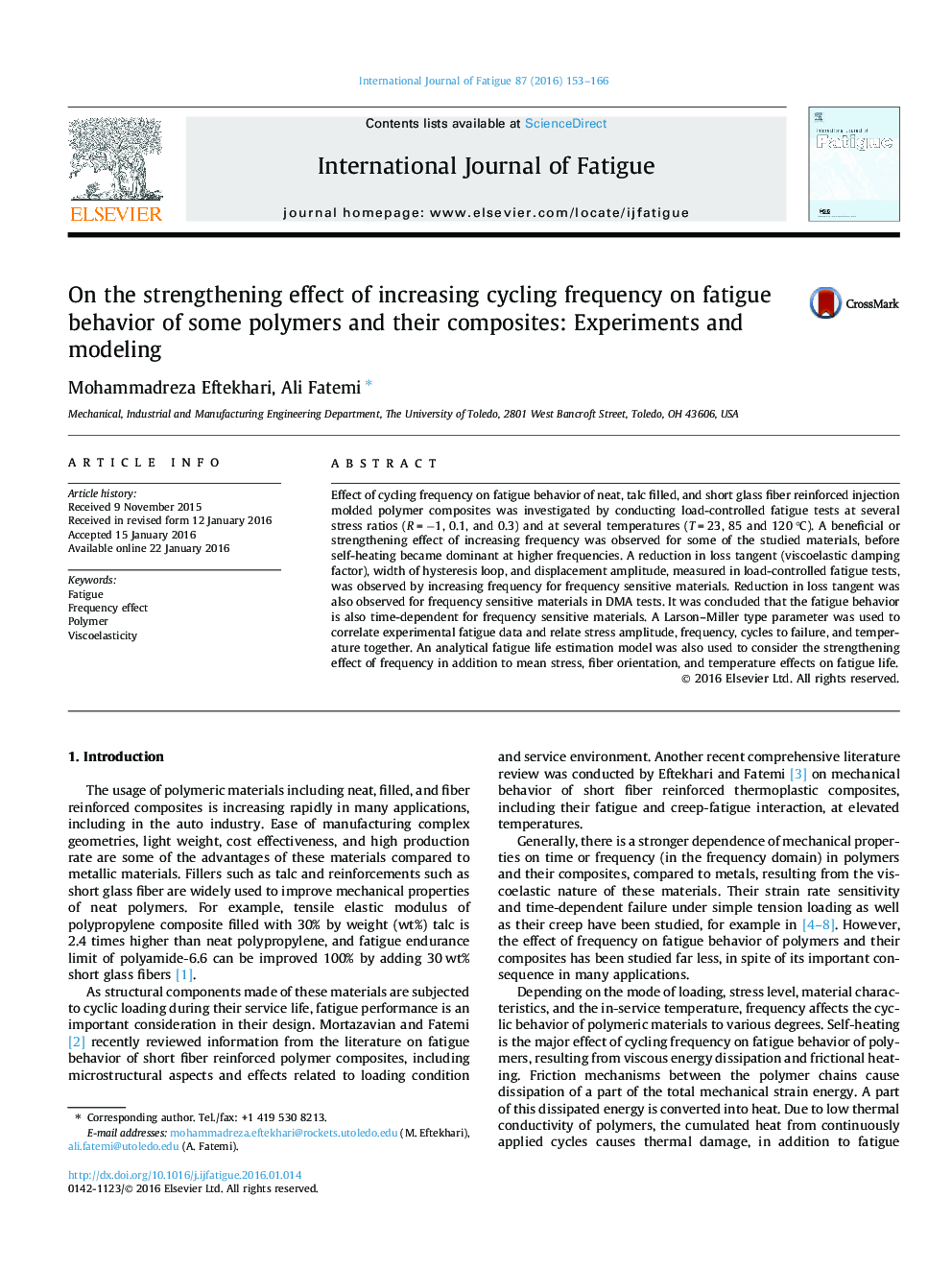| Article ID | Journal | Published Year | Pages | File Type |
|---|---|---|---|---|
| 778083 | International Journal of Fatigue | 2016 | 14 Pages |
•Investigating effect of cycling frequency on fatigue behavior of polymers.•Explaining strengthening effect of increasing frequency for some polymers.•Analytical fatigue life estimation model to capture frequency effect.
Effect of cycling frequency on fatigue behavior of neat, talc filled, and short glass fiber reinforced injection molded polymer composites was investigated by conducting load-controlled fatigue tests at several stress ratios (R = −1, 0.1, and 0.3) and at several temperatures (T = 23, 85 and 120 °C). A beneficial or strengthening effect of increasing frequency was observed for some of the studied materials, before self-heating became dominant at higher frequencies. A reduction in loss tangent (viscoelastic damping factor), width of hysteresis loop, and displacement amplitude, measured in load-controlled fatigue tests, was observed by increasing frequency for frequency sensitive materials. Reduction in loss tangent was also observed for frequency sensitive materials in DMA tests. It was concluded that the fatigue behavior is also time-dependent for frequency sensitive materials. A Larson–Miller type parameter was used to correlate experimental fatigue data and relate stress amplitude, frequency, cycles to failure, and temperature together. An analytical fatigue life estimation model was also used to consider the strengthening effect of frequency in addition to mean stress, fiber orientation, and temperature effects on fatigue life.
